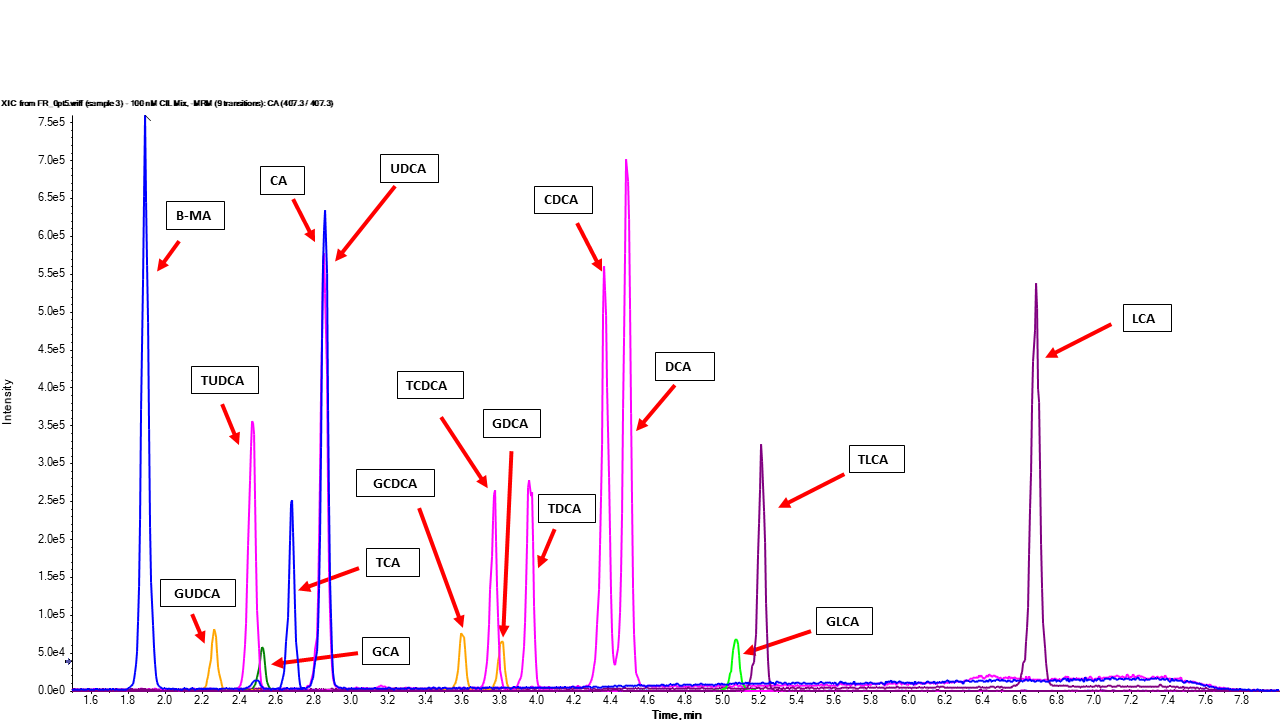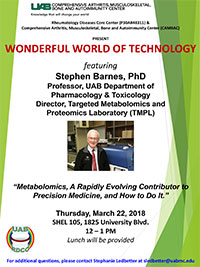Measured Analytes
- Chenodeoxycholic acid
- Cholic acid
- Deoxycholic acid
- Lithocholic acid
- B-muricholic acid
- Ursodeoxycholic acid
- Glycochenodeoxycholic acid
- Glycocholic acid
- Glycodeoxycholic acid
- Glycolithocholic acid
- Glycoursodeoxycholic acid
- Taurochenodeoxycholic acid
- Taurocholic acid
- Taurodeoxycholic acid
- Taurolithocholic acid
- Tauroursodeoxycholic acid
Chromatography
Liquid chromatography tandem mass spectrometry (LC-MS) was carried out with a Shimadzu Prominence HPLC system and SCIEX 6500 QTRAP mass spectrometer using positive mode ionization. An aliquot (5 µL) of each sample was loaded onto a Phenomenex 2.1 x 50mm, 2.6μm Kinetex PS C18, 80 Å reverse-phase column (Torrance, CA). A linear gradient of 20-40% mobile phase B for 6 min, then a 30 second hold, then re-equilibration at initial conditions for 3.5 minutes using an Exion UHPLC (Sciex, Toronto, Ontario) and a flow rate of 500ul/min and column temperature of 50oC. The mobile phases are A) ddH2O with 10mM Ammonium acetate and B) acetonitrile respectively.

Extraction Protocols:
Sample plasma was allowed to thaw on ice. 50µl of each sample was transferred to 96 well Strata Impact Plate.(Phenomenex). 250µl of methanol was added to samples and allowed to incubate for 5 minutes at room temperature to precipitate protein. 5’ mmhg Vacuum pressure was applied to pull samples into 2 ml collection plate. 150µl of water was added to samples, effectively diluting the sample 1:8 in 50% MeOH/50% H2O, and then samples were transferred to an LC vial to be analyzed.
References
[1] Glucagon-receptor Signaling Regulates Energy Metabolism Via Hepatic Farnesoid X Receptor and Fibroblast Growth Factor 21
Teayoun Kim, Shelly Nason, Cassie Holleman, Mark Pepin, Landon Wilson, Taylor F Berryhill, Adam R. Wende, Chad Steele, Martin E. Young, Stephen Barnes, Daniel J. Drucker, Brian Finan, Richard DiMarchi, Diego Perez-Tilve, Matthias Tschoep, Kirk M Habegger
Diabetes 2018 Jun; db171502.https://doi.org/10.2337/db17-1502
Resources
This tab might be populated with additional information like PowerPoint slides from presentations at conferences, class presentations, grant associated links, and other components that would be directly tied to the method.



